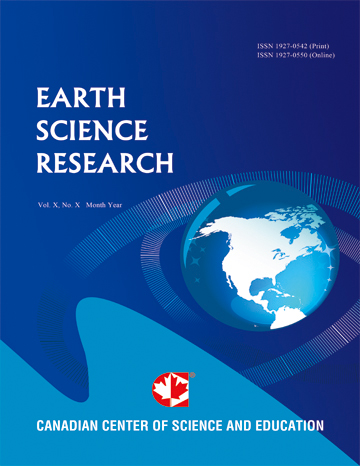Assessment of Environmental Geochemistry of Lead-Zinc Mining at Ishiagu Area, Lower Benue Trough, Southeastern Nigeria
- Odika, P.O.
- Anike, O.L.
- Onwuemesi, A.G.
- Odika, N.F.
- Ejeckam, R.B.
Abstract
Mining activities have long been recognized as a major source of environmental contamination associated with heavy metals and metalloids. This study evaluated the relationship between the occurrence and mining of lead-zinc sulphide ores at Ishiagu, Nigeria, and heavy metal and metalloid contamination. A comparative study of two zones in the area, with and without mining activities was also made Water, soil, stream sediment and ore samples were analyzed, after acid digestion, using atomic absorption spectrophotometer (AAS). The concentration levels of seven heavy metals and a metalloid namely Pb, Cu, Ni, Zn, Mn, Co, Cd and as were evaluated. While the highest concentration levels of As, Co and Pb (5.20 mg/l, 0.54 mg/l and 3.40 mg/l respectively) were found in water, those of Ni and Mn (2.26 mg/l and 5.48 mg/l respectively) occurred in soil. For Cu and Zn, highest levels of concentration (2.80 mg/l and 0.41 mg/l respectively) occurred in stream sediments. The variations in the concentration levels of these elements in varying geologic media (soil, water and sediment) indicate influence of rock types, human activities and media physiochemical characteristics. Geostatistical analyses using QQPlot, semivariogram and kriging showed normal distribution of these elements. Distribution and dispersion patterns of the heavy metals indicated increase in concentration levels in the local stream flow direction. Pb, Cu, As, Cd, Mn, and Ni concentrations had reached pollutant levels in water based on WHO standards, while Zn level is below. Since the local people use untreated surface water and groundwater for drinking and other domestic purposes, soil for farming and lead for cosmetics, long term exposure poses significant health risk for humans, animals and plants.
- Full Text:
 PDF
PDF
- DOI:10.5539/esr.v9n1p31
Index
Contact
- Lesley LuoEditorial Assistant
- esr@ccsenet.org
